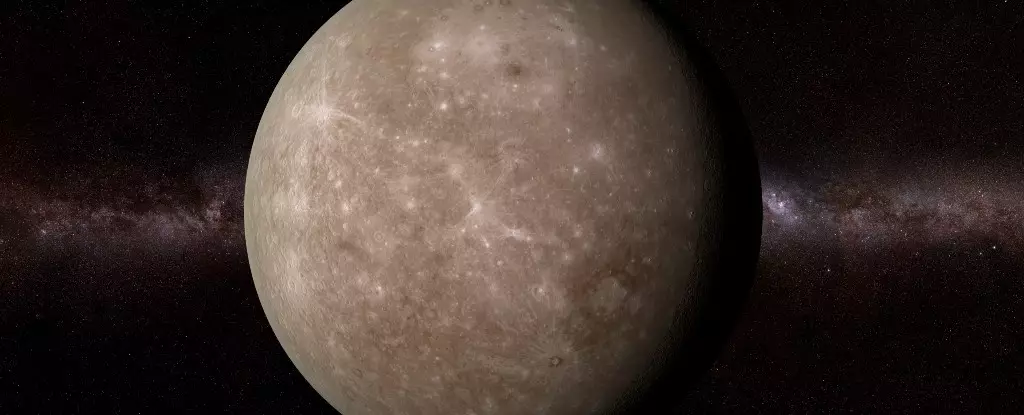Recent simulations of Mercury’s early years have revealed a fascinating discovery – the possibility of a 15-kilometer thick layer of solid diamond deep within the planet’s core. This hypothetical fortune, nestled between the core and the mantle, sheds light on the planet’s complex internal structure and could provide insights into the development of rocky planets like Mercury.
Scientists from research institutions in China and Belgium were inspired to reevaluate Mercury’s internal environment following new gravity field models. If the boundary between the core and the mantle is deeper than previously thought, the conditions for the formation of various materials within the planet may need to be reconsidered. Data from recent missions suggests that carbon in the form of graphite makes up the dark patches on Mercury’s surface, hinting at a rich deposit of carbon in the planet’s crust.
The abundance of graphite on Mercury’s surface suggests that the planet was saturated with carbon in its early years. Diamond, also composed of carbon, was previously ruled out due to insufficient pressures near Mercury’s core. However, new research indicates that under extreme conditions, diamond could have crystallized within the molten core and risen towards the mantle over millennia. This process could have led to the formation of a thick layer of diamond within the planet.
Revising Our Understanding of Mercury
The discovery of a diamond layer in Mercury’s core has implications for our understanding of the planet’s internal dynamics. The exceptional thermal conductivity of diamond could influence models of planetary cooling and the evolution of rocky worlds like Mercury. Additionally, the movement of materials responsible for generating magnetic fields may also be affected by the presence of diamond in the planet’s core.
Despite its small size, Mercury boasts a magnetic field, making it the only rocky planet, apart from Earth, to have a magnetosphere. The persistence of Mercury’s magnetic field, though weaker than Earth’s, raises questions about the planet’s internal structure. Understanding why Mercury’s magnetic field has endured for so long may require a reevaluation of what lies deep beneath the planet’s surface.


Leave a Reply